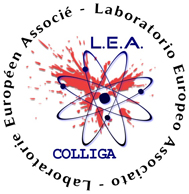Orateur
Dr
Emmanuel Clement
(CNRS GANIL)
Description
Excited states in a wide range of neutron rich nuclei around 68Ni has been studied in multi nucleon transfer reactions in inverse kinematics using a 238U beam at the Coulomb barrier and the large acceptance spectrometer VAMOS and the segmented germanium clover detectors EXOGAM at GANIL. In a first experiment, the lifetimes of the first excited states in even-even Fe and even-odd Co isotopes towards N=40 have been measured for the first time using the recoil-distance Doppler shift method. A sudden increase of collectivity from 62Fe to 64Fe has been observed and probe the weakness of the N=40 subshell gap. This observation is confirmed by the onset of a collective character in the neutron rich zinc and germanium isotopes. Moreover, collective 7/2- states observed in the structure of copper isotopes above nickel can be interpreted as a one proton in the p3/2 orbital coupled to the first 2+ state in nickel isotones. Similarly, a one proton hole in the f7/2 orbital coupled to the first 2+ state in nickel isotones would induce some collectivity in the cobalt isotopes as suggested by D. Pauwels et al. To demonstrate this, the lifetime of the first excited 9/2- and 3/2- states in 63-65Co have been measured and the B(E2) transition probability extracted. The data extracted from these experiments have been compared with large scale shell model calculations performed with ANTOINE code. Evidence of coexisting neutron, proton intruder states and "normal" state will be presented. A second experiment was recently done at the GANIL facility aiming to perform combined prompt and delayed spectroscopy at the VAMOS spectrometer in solenoid configuration. Preliminary results on new isomers and prompt decays in odd-mass in the third island of inversion will be presented.
Author
Dr
Emmanuel Clement
(CNRS GANIL)

